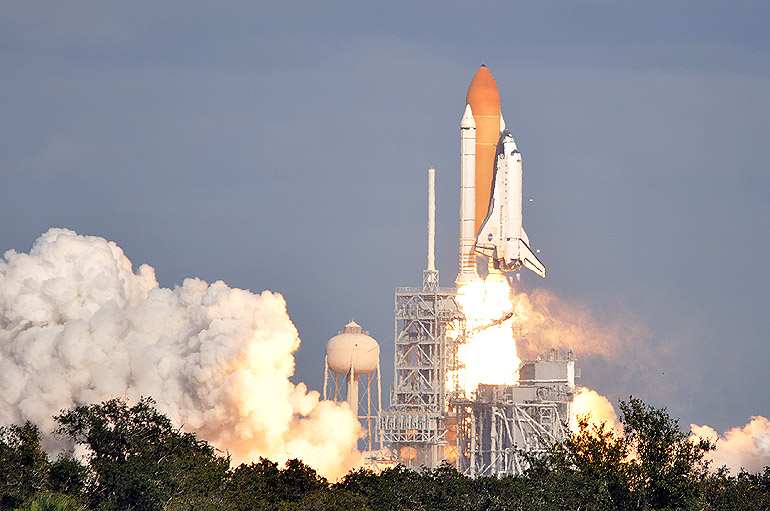
Space shuttle Atlantis lifts off from Kennedy Space Center's launch pad 39A at 2:28 p.m. Monday. This was the view through a 500mm lens from the press site just south of NASA's Vehicle Assembly Building.
The best things in life - at least in mine - come unexpectedly.
Several months ago, I wrote about how I thought I would never get closer to a space shuttle than I did when one flew over on its piggyback ride home. That's probably still correct, but I never thought I would get closer to a launch than to watch one from Titusville or, if I were lucky, from NASA Causeway at Kennedy Space Center. But tickets for that site are rather difficult to get.
The back story
In response to that post, a former co-worker and current NASA employee offered me a chance to view a shuttle launch from the press site at KSC, more than three miles from launch pad 39A. When he asked if I would be interested, I was shocked, perhaps dumbfounded. I probably could have used my position as a journalist to get a press badge for access. But it's nothing I ever aggressively sought out. So when I was asked, of course I eagerly said, "Yes!"
The original plan was for me to attend the night launch of Discovery in late August. The scheduling didn't fit, however, as work got in the way. I had to wait until next time. And that next time came Monday, at 2:28 p.m. for the launch of Atlantis on the 129th shuttle mission.
NASA authorized my access to KSC as a journalist for FLORIDA TODAY. My usual job, however, entails mostly desk work. It has been more than two years since I've been out in the field reporting and taking photos for the mainstream media - The Offlede not included. And Sunday, as I dismounted my motorcycle and entered the NASA press badge office clad in leather, aviator sunglasses and a Kevlar helmet, the folks there seemed to doubt my seriousness.
"Are you a member of the media?" one woman asked, a hint of suspicion in her voice.
Ironically, though, I doubted their seriousness, too. The badge office is a nondescript concrete structure straight out of the space race era. I mean, this is NASA, the agency of rocket science, heliophysics and hypersonic travel. I expected something more modern, more gaudy, more glamorous. But, this is the government, after all.
When I produced the required documents and when my story checked out, though, the employees handed me a press badge. It's good for the entire STS-129 mission, so if Atlantis lands at KSC the day after Thanksgiving, I should be able to take photos of it. I think. Well, I hope.
Launch day
It takes a certain appreciation and general awe of space to get goosebumps as one drives through the gates at KSC. Simply showing my press badge Monday morning, I was waved through the NASA employee checkpoints until I reached the Vehicle Assembly Building, perhaps one of the most recognizable structures in all of NASA. At 525 feet, it's the tallest one-story structure in the world and also has the globe's biggest doors, to fit those gigantic rockets. But its famed 209-by-110-foot American flag and "meatball" NASA logo bring the building infamy when they need expensive repainting jobs.
Last year, I saw the VAB from behind the tint of a bus window during a tour of KSC. I hadn't imagined being as close I was Monday and being able to take photos without the glare of a window in the way. My obsession with photographing the VAB got me through half the morning. I had arrived at 10 a.m., allowing plenty of time to wander the grounds of the press site to take photos and get a general idea of how things operate there.
In NASA's on-site, air-conditioned public relations office, The Boeing Co. provided free bottled water to members of the media. Perk! There was food for purchase and even souvenirs, which were mostly meant for the non-mainstream members of the media who were in attendance. All that, complemented by clean restrooms, made the press site more of a comfortable launch-viewing spot than Titusville's Space View Park.
The crowd, I thought, was sparse. I'm accustomed to battling for a spot along the Indian River in Titusville to set up my camera. At the press site, photographers gathered only minutes before liftoff and found premium spots at the edge of the Turn Basin, a large water body at the end of an inlet on Merritt Island. Across that and beyond a long stretch of trees and bushes was Atlantis.
At times, I think I was born a half-century too late. To have lived during the space race must have been exhilarating for those interested in science and in what was out there, beyond Earth's atmosphere. That sense of wonder, no doubt, meant there were more people covering launches in those days than there were on Monday. Parking was a breeze. The grandstands were mostly empty. Before the launch, the area around the flagpole and countdown clock - on the National Register of Historic Places - was sparsely occupied with casual snapshooters. Part of NASA's intent with the shuttles' replacement - the Constellation program and its Ares rockets - is to revitalize the nationalism that formerly typified American space efforts. For the next rocket destined for another heavenly body, maybe there will be more journalists in attendance.
But on Monday, at least, I wasn't complaining about the lack of people. The only competition for space came courtesy of a group of Twitter addicts who won spots to NASA's "tweet-up" of the launch, in which 100 microbloggers wrote posts - of no more than 140 characters - throughout the day. But 100 people with cell phone cameras didn't pose much of a threat. Comfortably, I set up my tripod behind the countdown clock and waited for the launch.
Seconds after liftoff, the sound of the shuttle's solid rocket boosters and main engines hit the press site. The roar worsened as the vehicle lifted higher. My heart was beating hard, but my innards themselves were being shaken by the force of the sound. It's something you cannot experience from anywhere but on the grounds of KSC. The sound in Titusville doesn't begin to rival it.
With Atlantis safely on its way, the Twitter fans - some of them streaming live video from their laptops, others typing pointedly on their BlackBerrys and iPhones - cheered. But what was the case in comparing the shuttle's sound at KSC and Titusville, it was the opposite for crowd noise. Titusville, the Space Coast causeways and Brevard County beaches all have the KSC press site's number. Of course, journalists aren't much for cheering when they have jobs to do. But it's something I definitely missed Monday: The crowd's anticipation leading up to the launch wasn't present among most members of the press, many of whom have covered these launches for years. Not that they weren't eager, too; they just didn't outwardly express that.
Eh, but that's a small price to pay for an unexpected experience that I would love to have unexpectedly happen to me again.
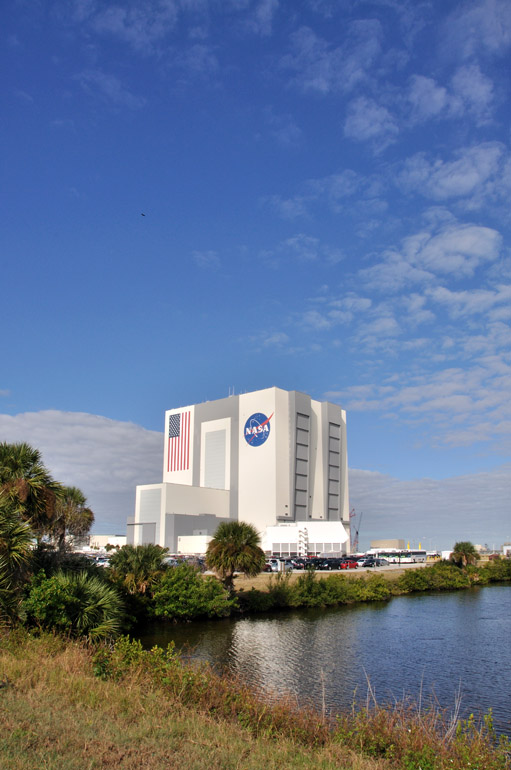
For days before the launch, the weather had been predicted to be nearly perfect. When I arrived at the press site, the sky was fairly clear above the Vehicle Assembly Building.
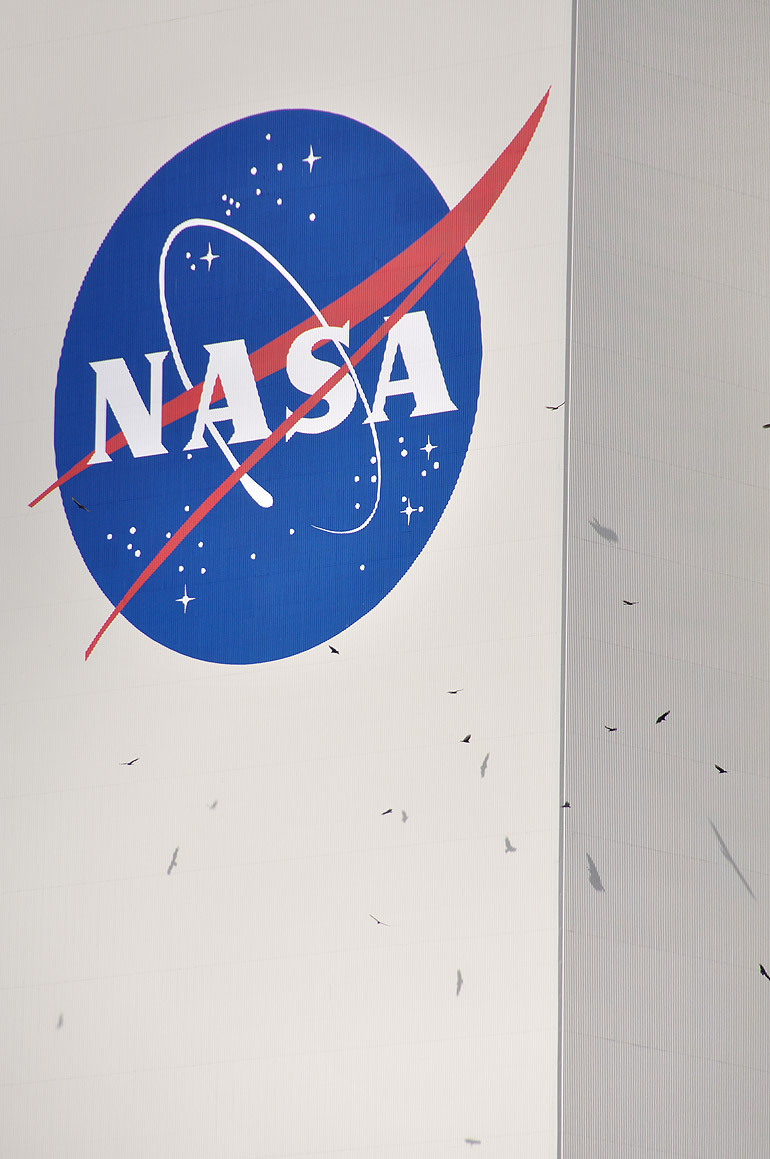
A close-up of the VAB shows the giant "meatball" logo, and all the vultures flying around it as though it were about to die. I hope that's not foreshadowing.
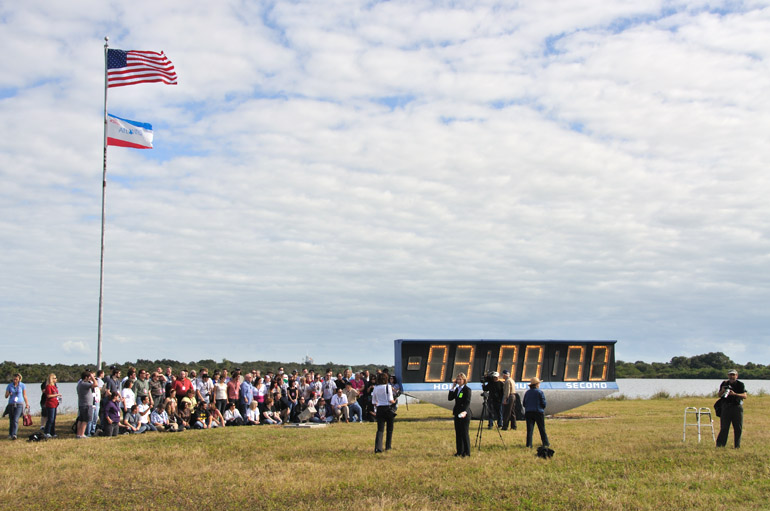
A group of 100 fans of NASA's Twitter account gather for a group photo near the press site's countdown clock. Many of the Twitterers said they were happy to get this "once-in-a-lifetime" opportunity and that they wanted to bring the excitement of space to a younger generation of media consumers.

The NASA Astrovan - not to be confused with the Chevrolet Astro, a considerably less classy vehicle - carries Atlantis' six astronauts by the VAB, en route to the launch pad.
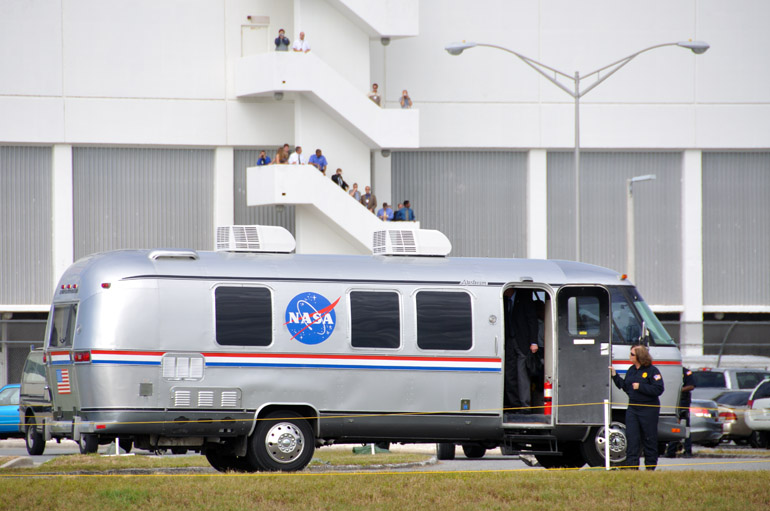
A crowd of employees gathered on the outside steps of the VAB to watch the astronauts pass. The Asrovan has a police ground escort, while a helicopter watches the skies above it.
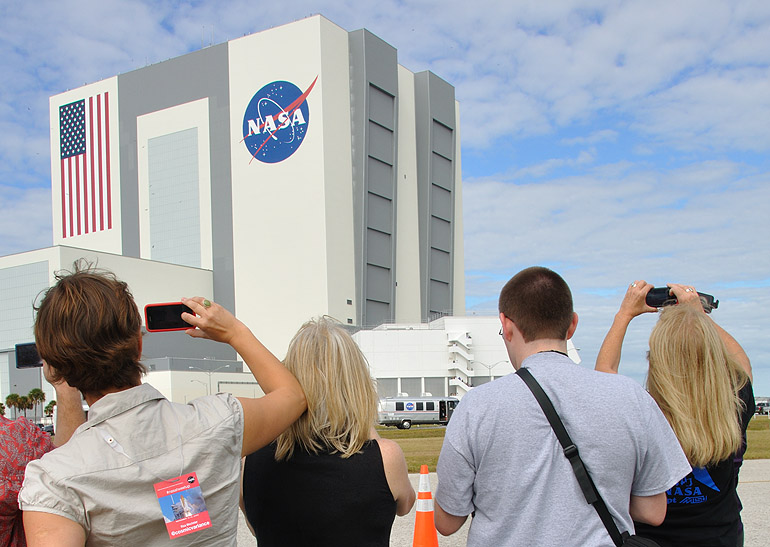
To watch the astronauts go by, the Twitter fanatics gathered along Saturn Causeway, which leads to the press site.
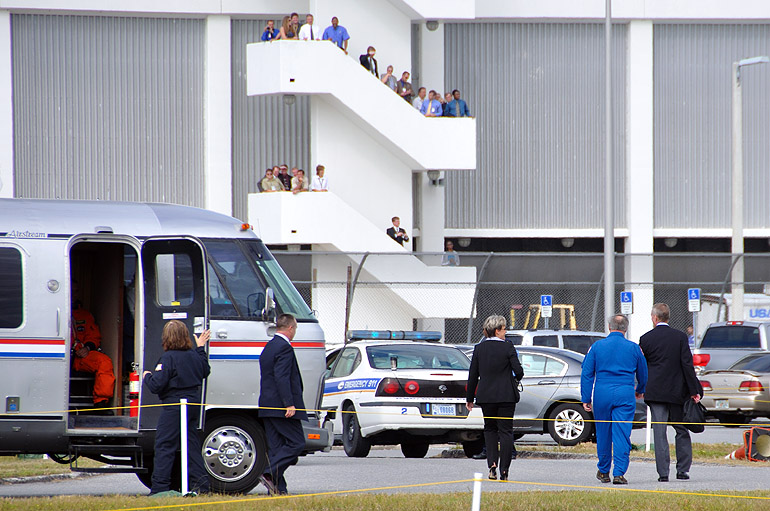
You can actually see an astronaut's leg in this photo, as the Astrovan makes a scheduled stop at the VAB.
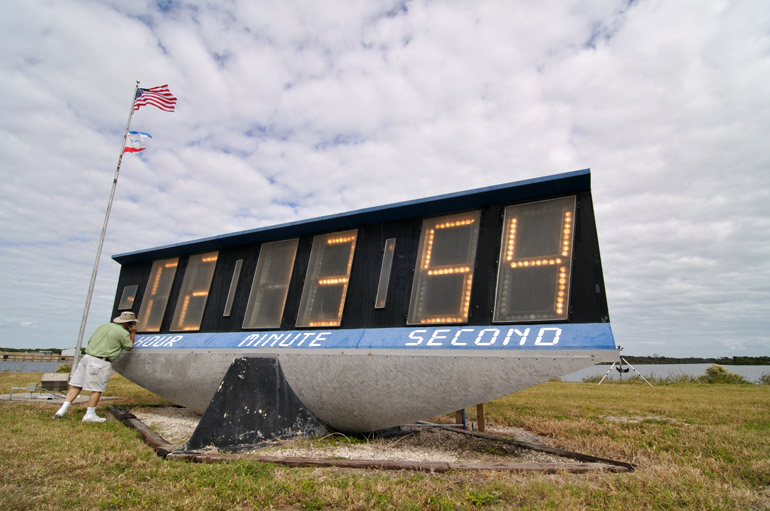
A member of the media inspects the countdown clock. I heard a few people mention how NASA should replace this worn, outdated piece of timekeeping equipment. Considering it's part of a historic site, however, I don't see that happening.
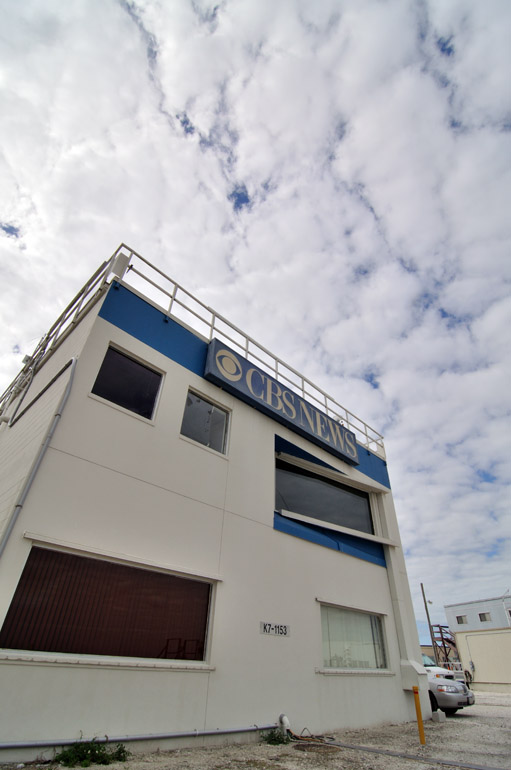
The CBS News building sits on the press mound.
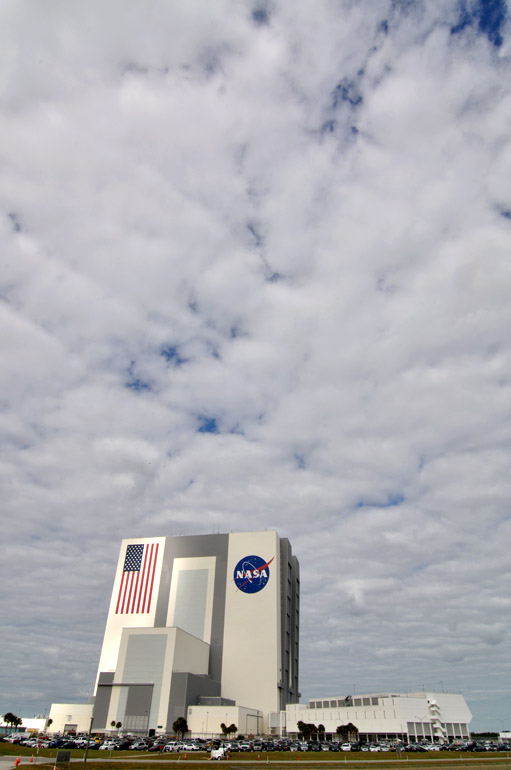
That blue sky earlier in the morning quickly gave way to a low deck of clouds, prompting NASA weather officials to declare conditions unfavorable for launch.
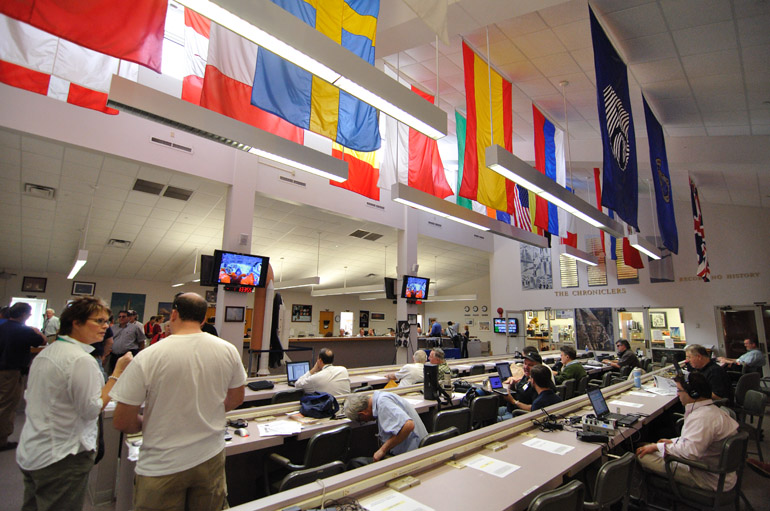
Inside the news center, reporters sit at their workstations. Unlike the case at a Best Western, though, there is no free wireless Internet here. Journalists, however, can obtain needed equipment, get updates on the launch, watch NASA TV or grab one of the several press guides set out for them.

Central Florida News 13, a 24-hour cable station here, is represented at the press site by Scott Harris, left, and Greg Pallone, the reporter for Brevard County.
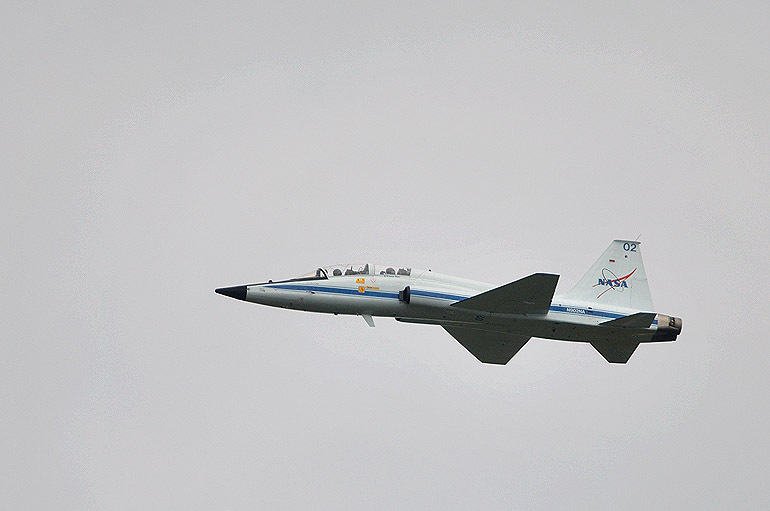
NASA astronaut Steve Lindsey flies a T-38 Talon, a training jet, to assess the weather conditions over KSC.
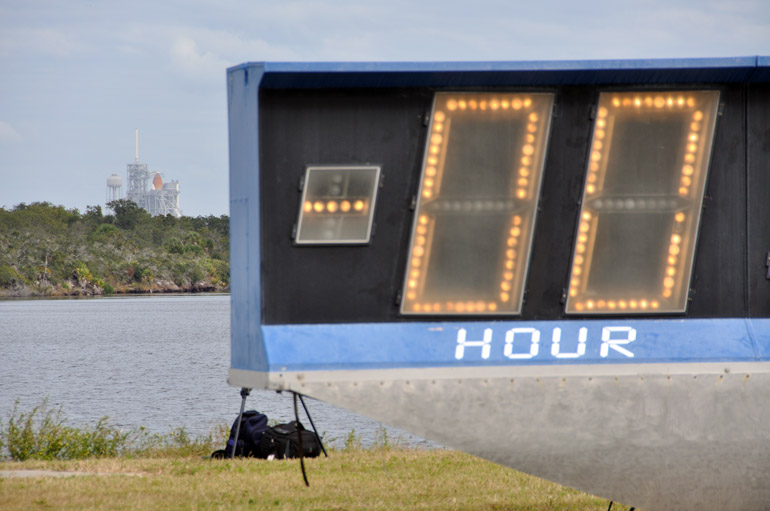
The launch pad, with the orange external fuel tank sticking above it, is seen in the background.
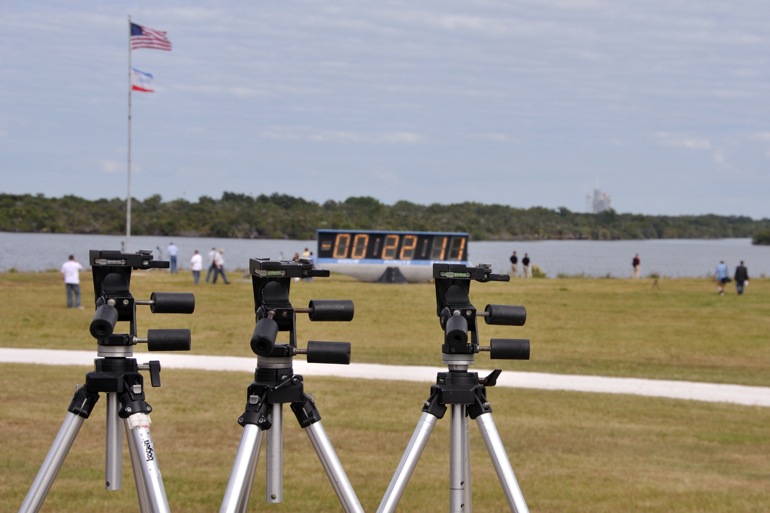
Television camera tripods stand at the ready.
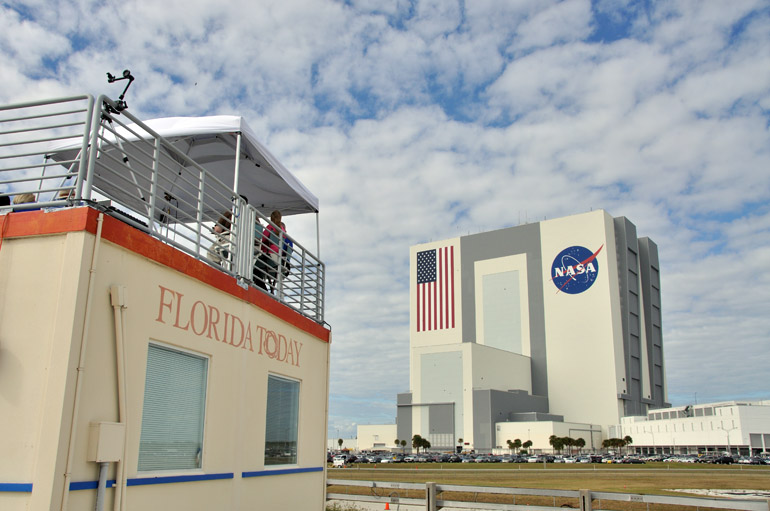
FLORIDA TODAY constructed and owns its building at the press site. It's on the far end of the mound, closest to the VAB.
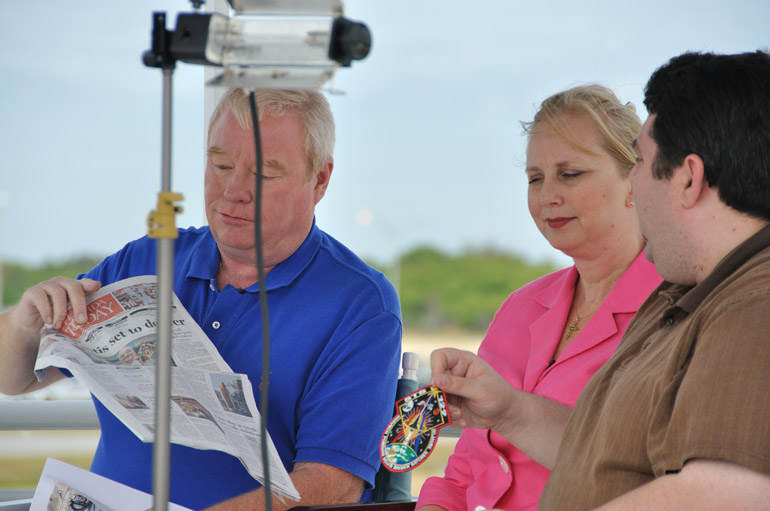
Todd Halvorson, FLORIDA TODAY's chief space reporter, and Kimberly Moore, a reporter who's also a former TV journalist, discuss the STS-129 patch during a live broadcast on floridatoday.com. My co-workers broadcast for several hours before each launch, conducting interviews and updating viewers on the mission status.
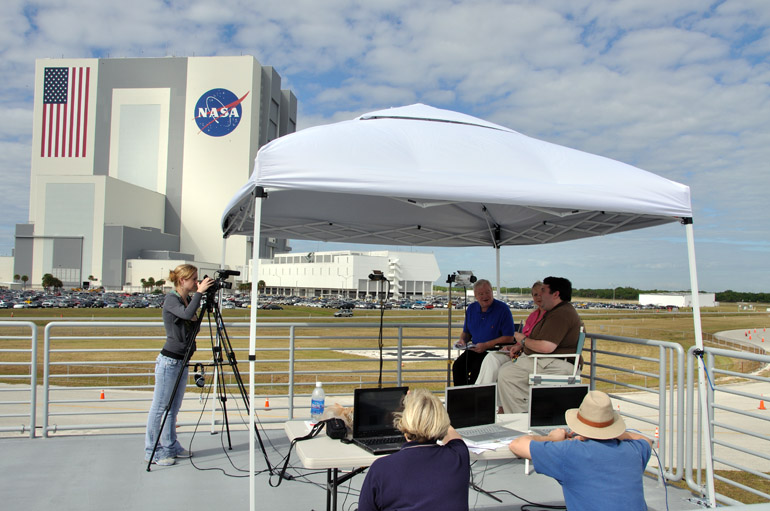
While the broadcasters were at work on top of the building, even more reporters and editors were inside, constantly updating the newspaper's award-winning blog, The Flame Trench. The top of the building offers only a small advantage for photographers because it's slightly elevated in reference to the trees in front of the launch pad. But the foreground is a parking lot, so I wasn't interested in staying.
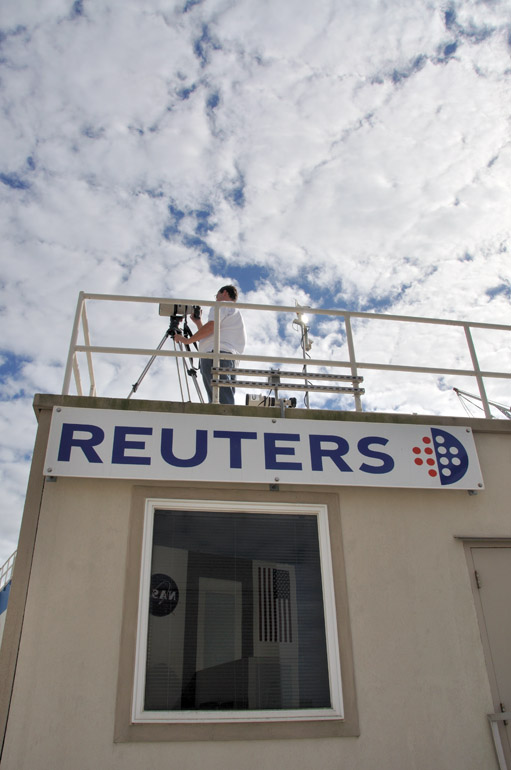
A photographer for Reuters gets ready an hour before the launch. The VAB is reflected in the window.
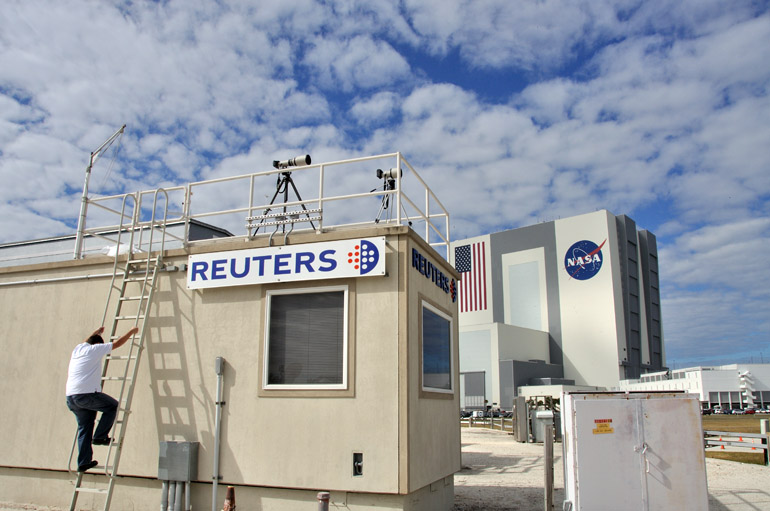
The "photog," as journalists call them, climbs off the roof owned by the British wire service. At least FLORIDA TODAY is fortunate enough to have built a stairway to its roof instead of installing a ladder.
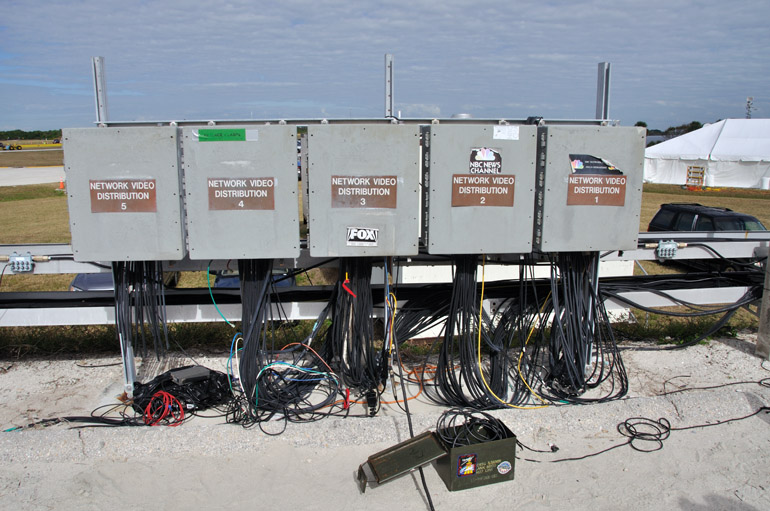
I guess no one needed the fifth. That's a nice ammo box, though.
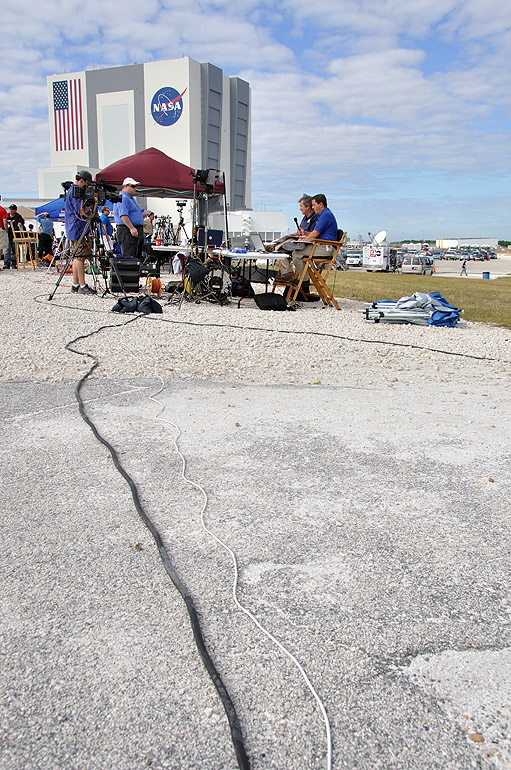
Back to the News 13 guys, who go without their tent as the clock winds down.

In most of these first few shots, chunks of ice are seen falling from the external fuel tank.
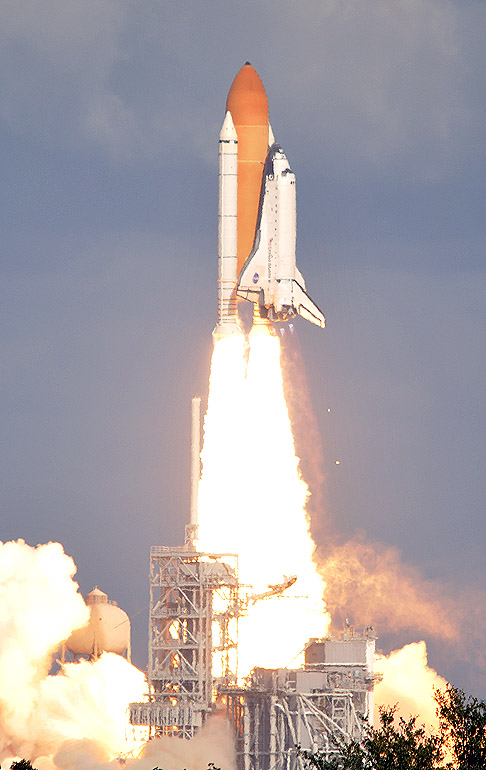
This is Atlantis' "penultimate" flight, i.e. second to last, before it's decommissioned.
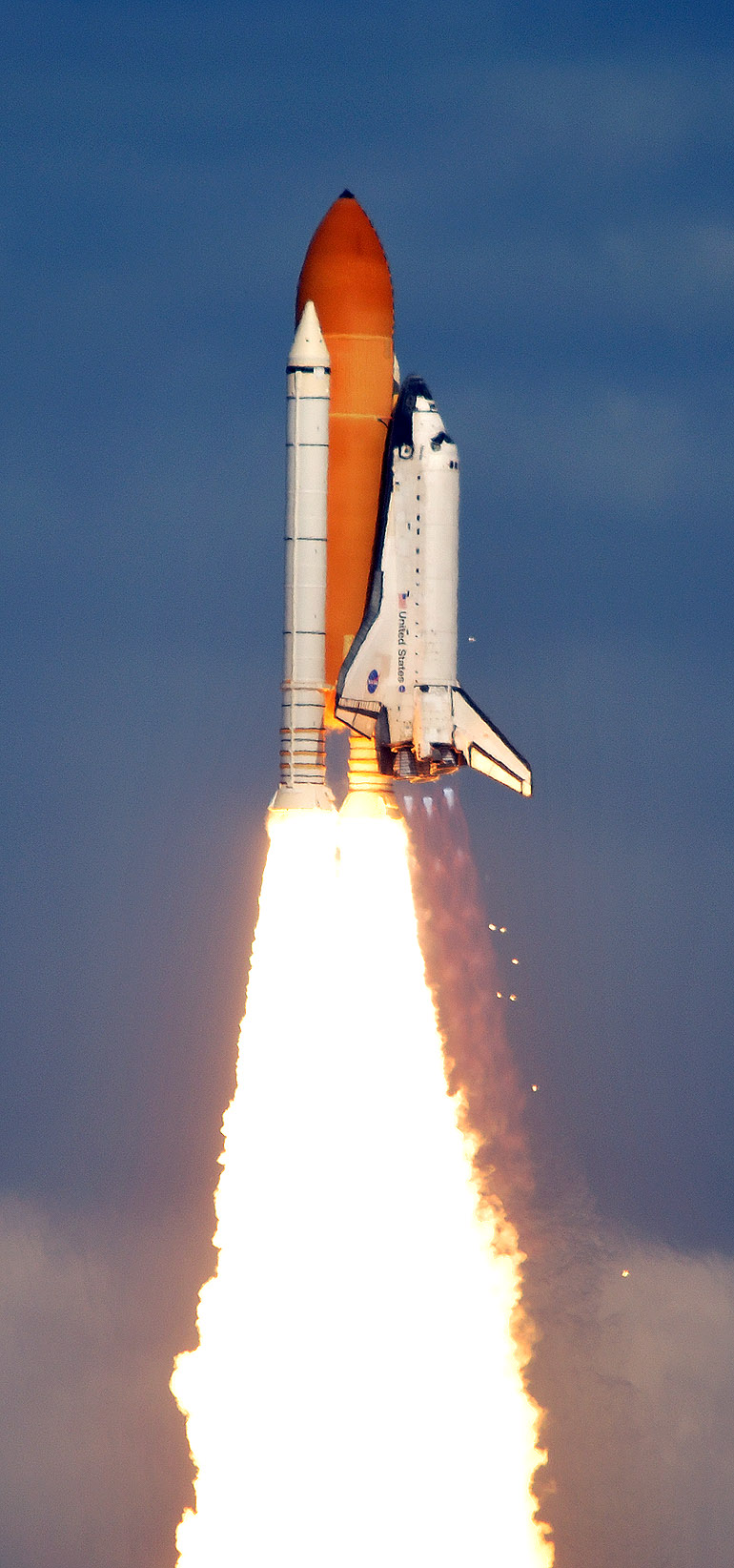
I wanted to run one large vertical photo to give you all the details, including the debris.
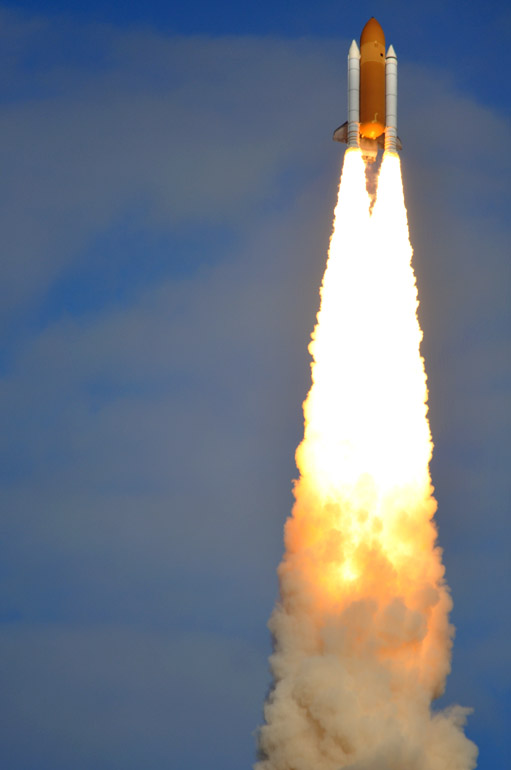
Shortly after liftoff, the shuttle rolls so its twin solid rocket boosters are facing the press site, as opposed to the orbiter itself.
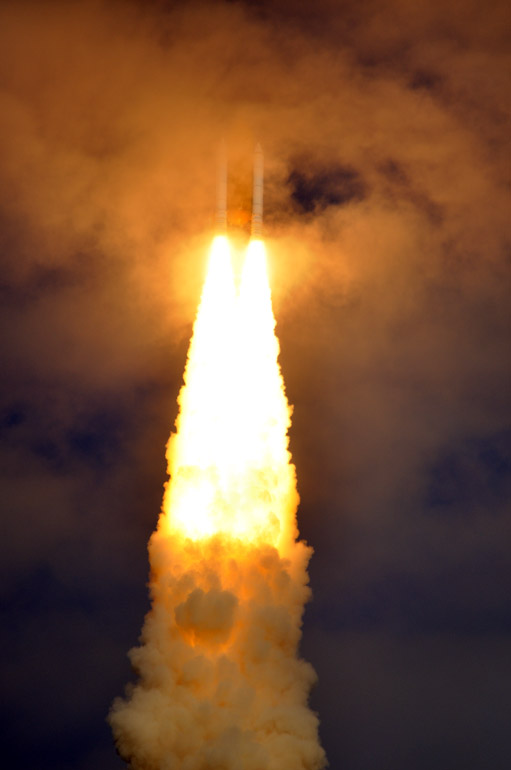
Interesting lighting here as the shuttle passes through low clouds.
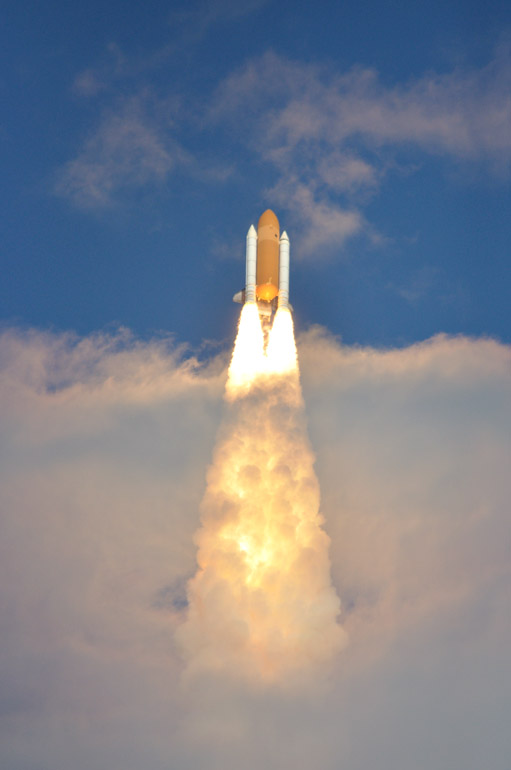
Atlantis eventually emerged. Sure, it would have been great to have a 100 percent clear day, but many of the shots in this post wouldn't be interesting without clouds.

Atlantis' mission is to deliver spare parts to the International Space Station. If the space station needs certain equipment after the shuttles are retired, it might be out of luck, as the shuttles are the only spacecraft now capable of carrying those things.

The contrails create a bit of a hook.
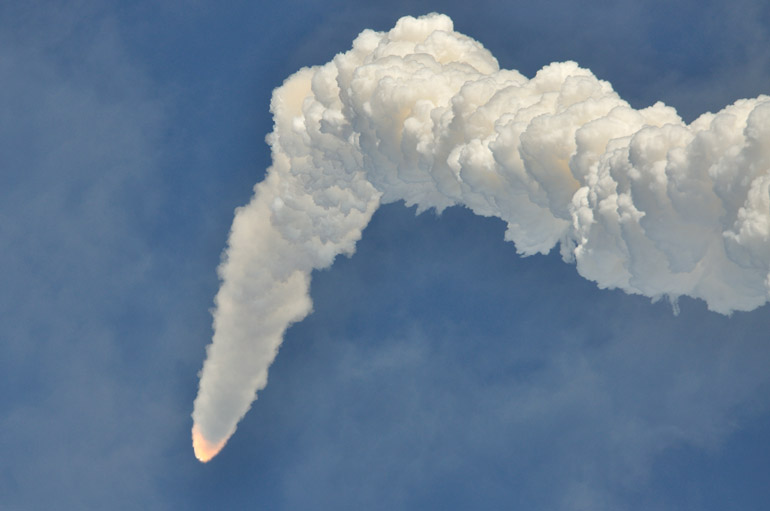
Another contrail shot.
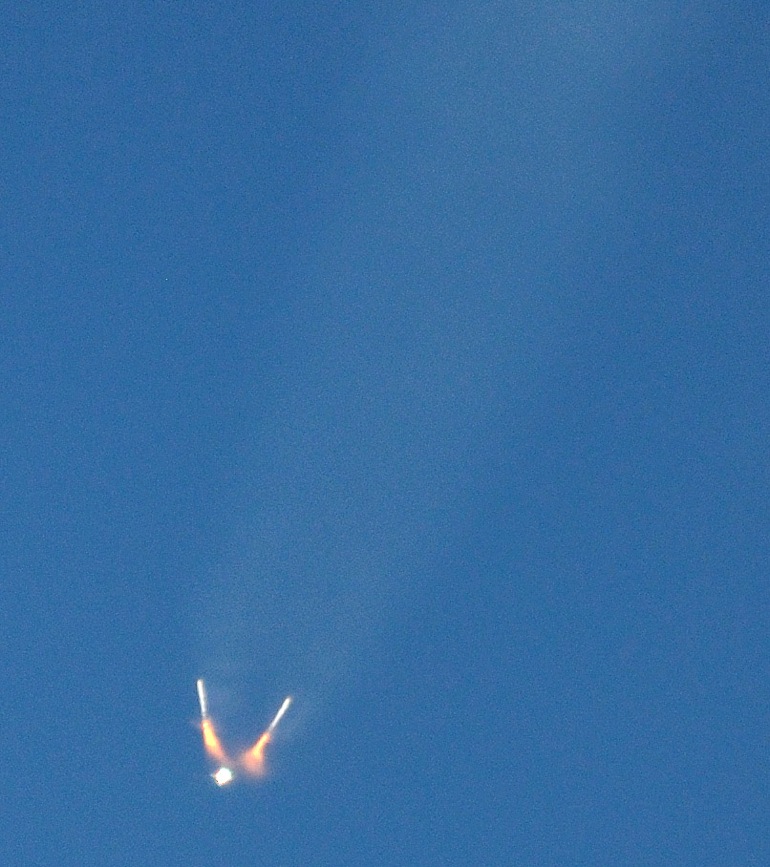
In this tightly cropped image, the two solid rocket boosters fall off the shuttle's external tank. The SRBs supply 80 percent of the shuttle's liftoff thrust.
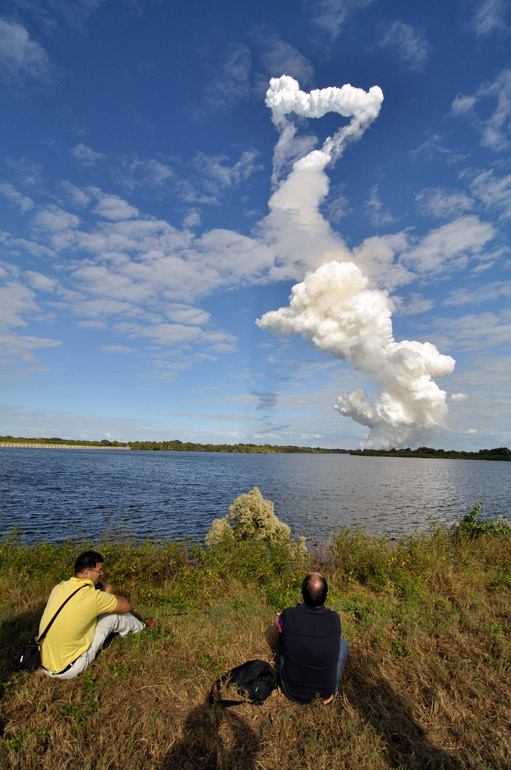
Finally, I switched to a wide angle lens, here capturing the shadow cast by the contrails on the cloud cover to the north.
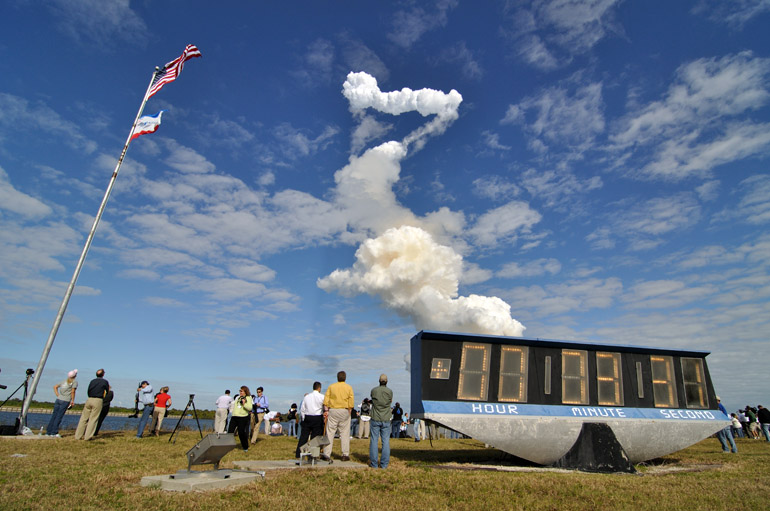
If I were to do this again, I'd go for a wider-angle shot of the shuttle lifting off in the background, with this clock in the foreground.
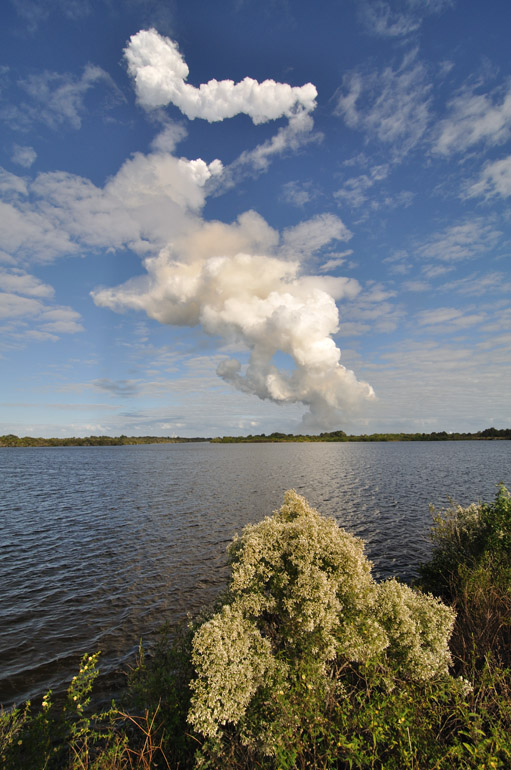
The contrails reflect onto the surface of the Turn Basin.
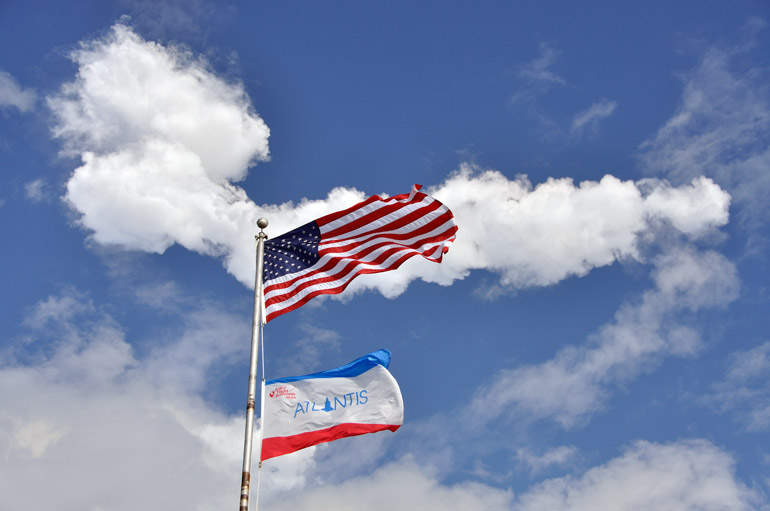
Of course, our flag being at full staff makes this shot possible.
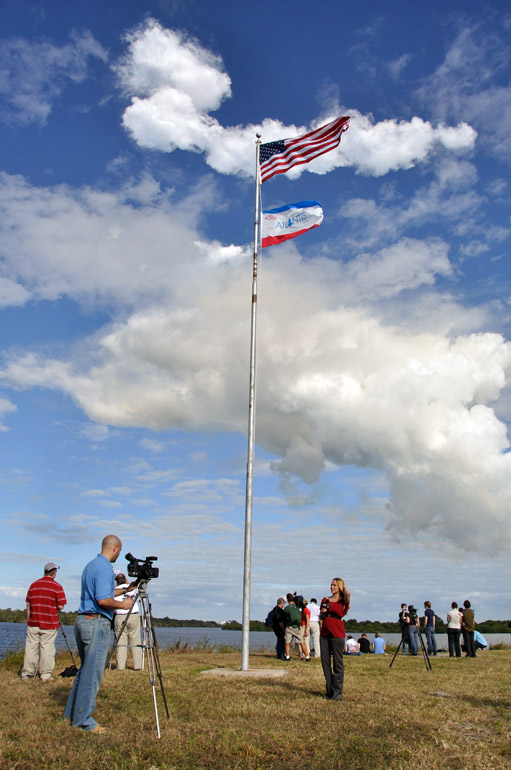
A Spanish-language reporter records a report after the launch.
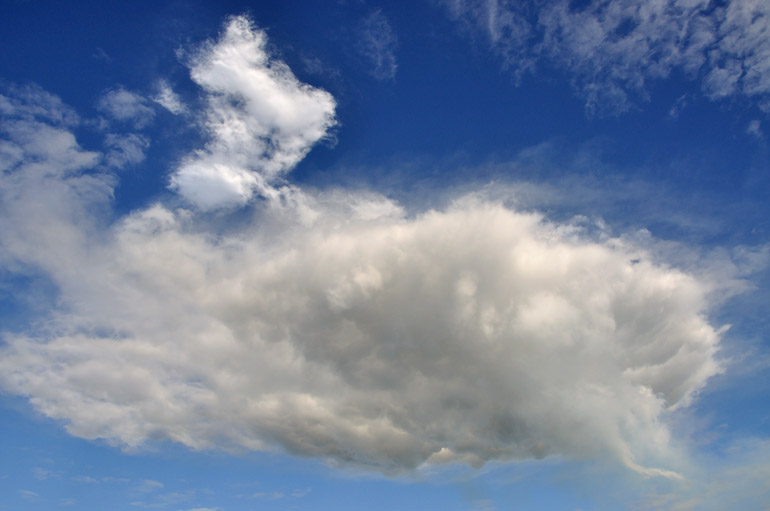
The nature of the contrails and the form and colors they take in the hour after the launch is determined by a number of weather factors. Foremost among them are wind and sunlight. Monday's conditions corralled the contrails into a circular cloud with a rat tail, seen at the right.
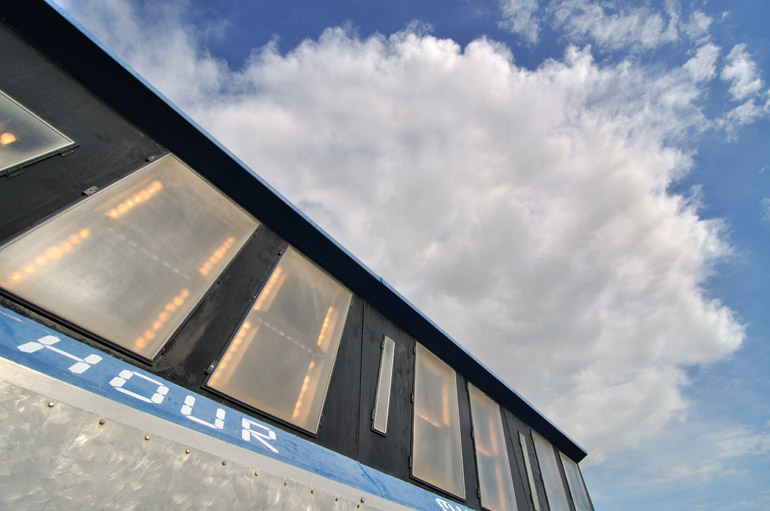
The newly formed "contrail cloud," I thought, might spawn lightning or a downpour - OK, I didn't think that; but I was hoping for it. For this shot, I was on my back, pointing the camera upward.

With the wind blowing onshore and slightly to the northwest, the cloud eventually moved directly over the press site.
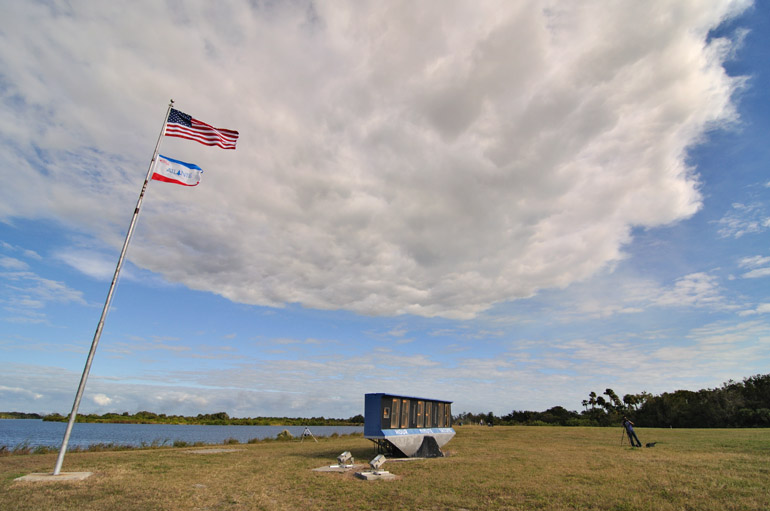
Most people had cleared out, not bothering to watch the cloud as I did.
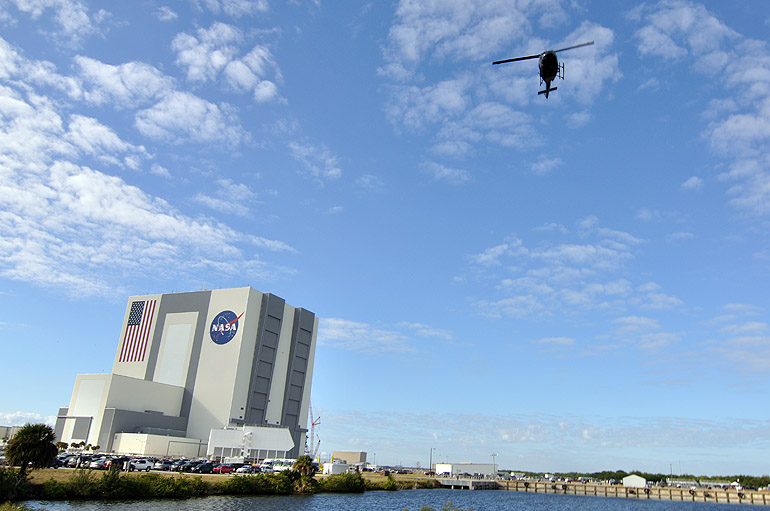
A helicopter circles before landing at the press site.
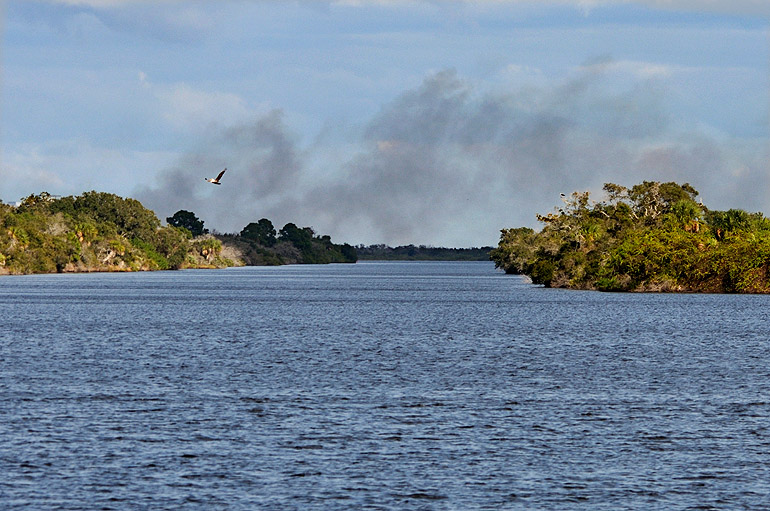
Apparently, the launch started a small grass fire near the pad. It burned for a while before firefighters, who were waiting in trucks near the VAB, got the go-ahead to race off and attack it. There always are dangers - such as toxic fumes - that have to be checked before personnel can be given permission to head to the launch pad. The fire was quickly extinguished.



No comments:
Post a Comment